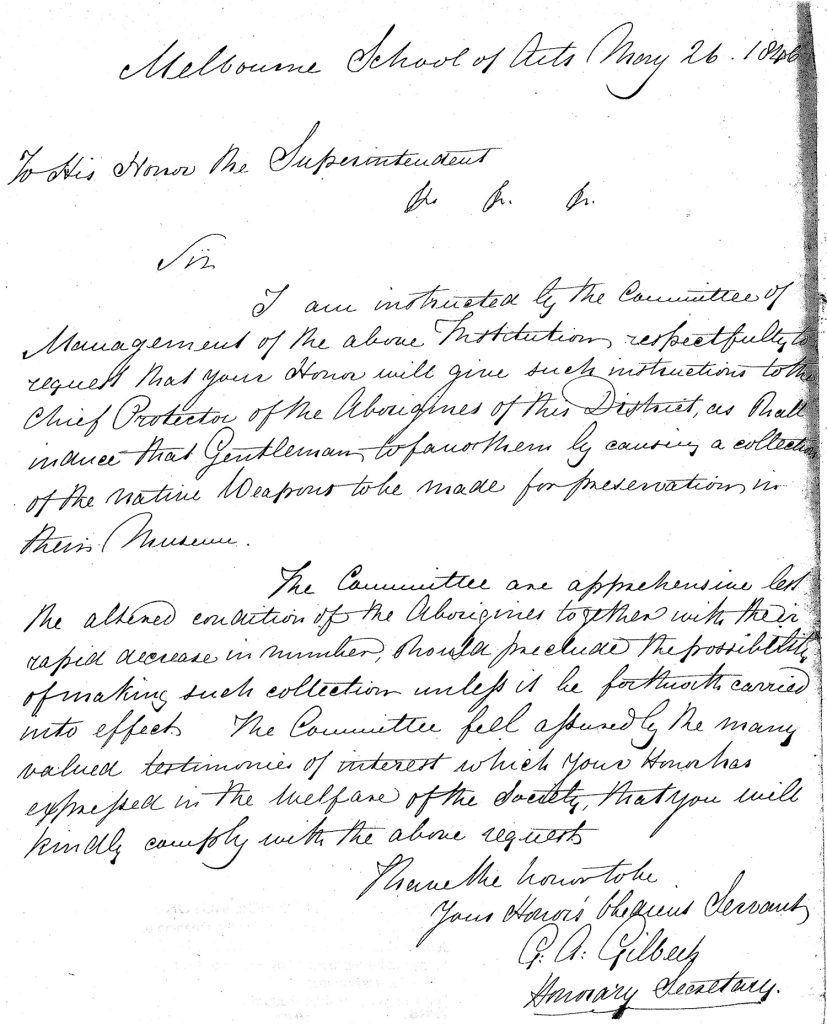The Melbourne Athenaeum Inc.'s 2024 Annual General Meeting will be held at 1pm, Monday 15 April, in the Melbourne Athenaeum Library.
For more information please refer to the events page or speak to a staff member.
From the founding of the institution, the establishment of a museum was identified as an important part of meeting the purpose to impart literary, scientific and other useful knowledge to members and the general public. In 1840 the institution's annual general meeting noted that the committee would welcome donations from the colony's inhabitants.
Its report says in part: "In a new Colony like this there are many things which their present abundance may render common, and therefore comparatively of little interest, but which to the antiquarian of future generations or even to the curious of different countries at the present time would be highly appreciated."
A motion to procure rooms for a museum was carried unanimously, however the process of establishing the museum was difficult. Committee reports have numerous references to the lack of progress in forming collections.
The committee remained resolute and in 1844 it assigned a curator to each museum department — ornithology, entomology, conchology, other branches of zoology with comparative anatomy, botany, geology and mineralogy, Aborigines, fine arts and numismatics, and works of art and illustrations of the trade and commerce of the colony.
The museum took a special interest in Aboriginal artefacts. In April 1846 the committee asked the Honourable Secretary, George Alexander Gilbert, to write to the Chief Protector of Aboriginals, through His Honour the Superintendent, for a collection of native weapons to be given and attached to the museum for preservation.

In May 1847, the General Committee minutes noted that Mr. Robinson, the Chief Protector, donated two spears, one reed, one paddle, one leangle and one bone instrument.
Despite an endorsement from the colony's Governor and various donations, the museum suffered from a lack of financial support and interest.
Minutes for 27 January 1846 record: "The Museum was transferred during last year to the Large Room of the Hall where cases upon an elegant and commodious plan have been constructed around the sides of the Apartment."
The annual report for 1851 discussed the need for a larger lecture hall, noting that the existing hall could not accommodate the increasing number of people attending lectures, classes and entertainments. It was common for people to be turned away at the door. The committee also considered renovating the existing hall, once the much larger one was built, to accommodate the museum. Some committee members thought that the collection deserved a dedicated space because it was more important than other branches of the institution from a scientific viewpoint, stating that Australia was "particularly rich in mineral wealth, abounding in botanical, zoological, and other specimens."
It was not until 1872 that the large hall was finally constructed at the back of the building, but the small hall does not seem to have been given up to become a museum. Both halls were rented day and night by the growing number of social, cultural, business and sporting organisations for meetings, rehearsals, performances, classes and lectures.
The 1855 annual report noted that the committee had not been able to add to the museum due to a lack of space. "This is the more to be regretted as a large quantity of materials for the formation of a museum is now lying useless in various parts of the present building," the report noted.
Museum records list curators until 1878. However, in 1861 the committee's report noted that the museum had been in abeyance for several years and documented the committee's dismay that a considerable collection of articles and specimens was "remaining entirely useless to the public."
The committee noted that to properly arrange and exhibit the collection would require a large outlay, and to have it efficiently taken care of a further constant expenditure. The committee recommended that the collection be catalogued and deposited on loan to the National Museum "subject to being restored to the Institution on demand at any time." So far no evidence has been found of the collection's final destination. No catalogue or list of the museum's contents has been located.